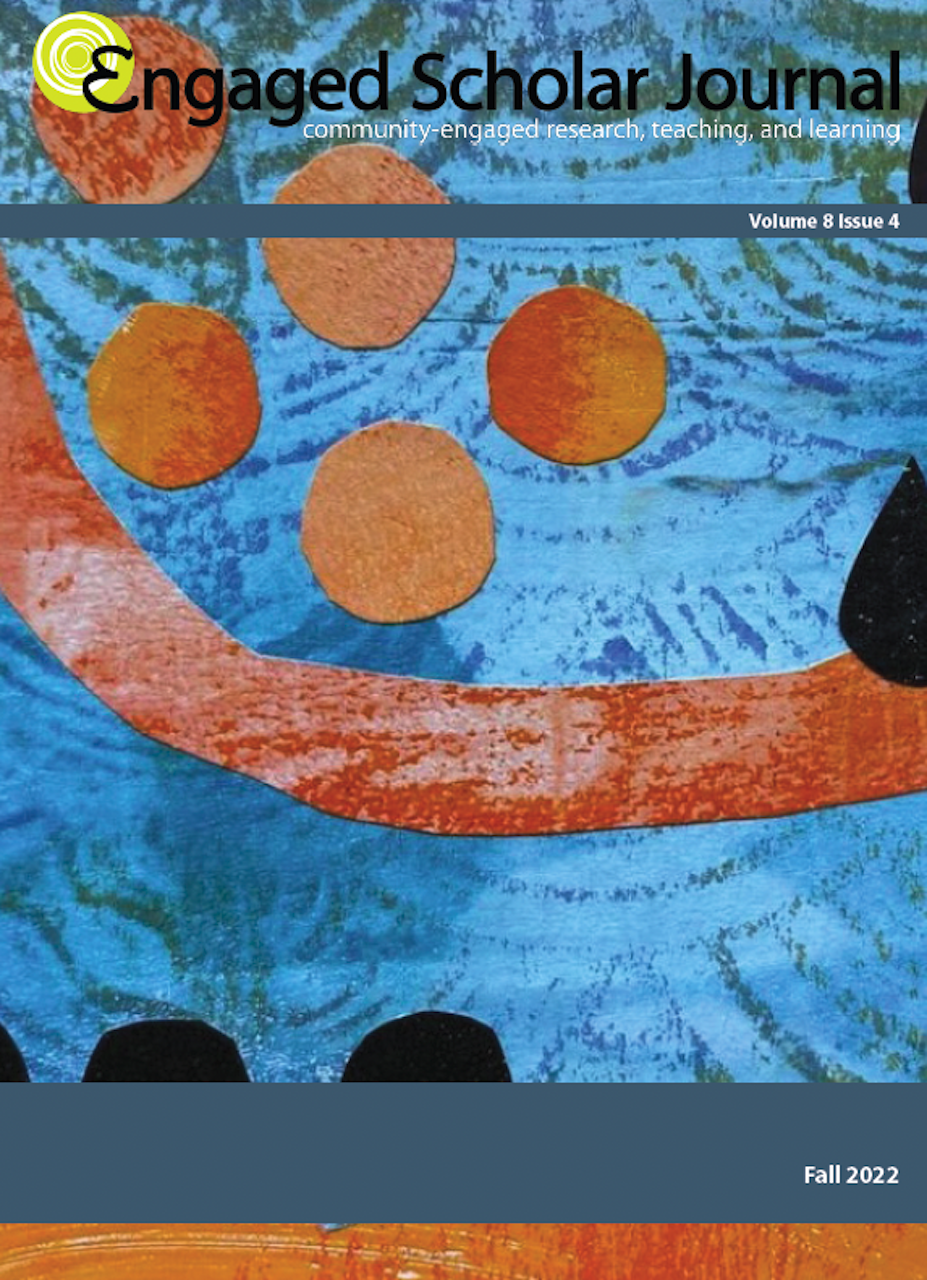Studies of Physical Parameters of Indigenous Artifacts. Collecting and Preserving the Relating Oral Stories
DOI:
https://doi.org/10.15402/esj.v8i4.70756Keywords:
Indigenous artifacts, archaeology, oral stories, statistical analysis, carbon datingAbstract
The project, supported by the Department of Canadian Heritage, was conducted by scholars from First Nations University of Canada (FNUniv), University of Regina (U of R) and Royal Saskatchewan Museum (RSM) in 2018 - 2020, in collaboration with Sturgeon Lake and Pelican Narrows First Nations communities. More than forty people, including Elders and students, participated in this project.
The research Ethics review was done by U of R. We also consulted with Elders regarding the research Ethics protocols during the individual meetings, ceremonies and workshops in Pelican Narrows and Sturgeon Lake. Research assistants (Indigenous students) were trained (Indigenous studies and the basics of archaeology) for working in First Nations communities and at the RSM.
We interviewed Elders and Knowledge Keepers from Pelican Narrows and Sturgeon Lake and recorded their oral stories; collected Indigenous artifacts in these communities and selected samples from RSM collections for physical measurements at the Scanning Electron Microscope Laboratory of the University of Alberta, Saskatchewan Isotope Laboratory of the University of Saskatchewan and André E. Lalonde Accelerator Mass Spectrometry Laboratory of the University of Ottawa. Then we carried out the statistical analysis of the obtained data. The preliminary results of the project were presented to community members.
References
Ambrose, S. H. (1990). Preparation and characterization of bone and tooth collagen for isotopic analysis. Journal of Archaeological Science, 17(4), 431–451.
Crann C. A., Murseli, S., St-Jean, G., Zhao, X., Clark, I. D., & Kieser, W. E. (2017). First status report on radiocarbon sample preparation at the A.E. Lalonde AMS Laboratory (Ottawa, Canada). Radiocarbon, 59(3), 695–704. https://doi.org/10.1017/RDC.2016.55
Gage, N. (2016, March 31). Aboriginal ochre fingerprinting helping researchers trace ancient Indigenous trade routes. ABC News. http://www.abc.net.au/news/2016-03-31/ochrescanning-helps-researchers-trace-aboriginal-trade-routes/7289870
Henry, R., Otto, T., & Wood, M. (2013). Ethnographic artifacts and value transformations. HAU: Journal of Ethnographic Theory, 3(2), 33–51.
Katzenberg, M. A., & Harrison, R. G. (1997). What’s in a bone? Recent advances in archaeological bone chemistry. Journal of Archaeological Research, 5(3), 265–293.
Levine, M. A. (2007). Determining the provenance of native copper artifacts from Northeastern North America: Evidence from instrumental neutron activation analysis. Journal of Archaeological Science, 34(4), 572–587.
Nehlich, O. (2015). The application of sulphur isotope analyses in archaeological research: A review.
Earth-Science Reviews, 142, 1–17.
Ramsey, B. C. (2009). Bayesian analysis of radiocarbon dates. Radiocarbon, 51(1), 337–360.
Reimer, P. J., Bard, E., Bayliss, A., Beck, J. W., Blackwell, P. G., Bronk, R. C., Buck, C. E., Cheng, H., Edwards, R. L., Friedrich, M., Grootes, P. M., Guilderson, T. P., Haflidason, H., Hajdas, I., Hatté, C., Heaton, T. J., Hogg, A. G., Hughen, K. A., Kaiser, K. F., Kromer, B., Manning, S. W., Niu, M., Reimer, R. W., Richards, D. A., Scott, E. M., Southon, J. R., Turney, C. S. M., & van der Plicht, J. (2013). IntCal13 and MARINE13 radiocarbon age calibration curves 0–50000 years calBP. Radiocarbon, 55(4), 1869–1887.
Sardarli, A. (2020). Studies of physical parameters of Indigenous artifacts: Collecting and preserving the relating oral stories. Indigenous Artifacts, First Nations University of Canada. http://indigenous-artifacts.ca/brochure/
Sardarli, A., Siegfried, E., & Skylar, W. (2020). Studies of physical parameters of Indigenous artifacts: Collecting and preserving the relating oral stories. Catalogue prepared by Arzu Sardarli, Evelyn Siegfried, and Skylar Wall, Indigenous Artifacts, First Nations University of Canada. http://indigenous-artifacts.ca/catalogue/
Sardarli, A., Siegfried, E., Volodin, A., & Barbi, M. (2018). Studies of oral stories about Indigenous artifacts. Final research report to Indigenous Advisory Circle, University of Regina.
Sardarli, A., Volodin, A., Osmanli, K., & Siegfried, E. (2022). Statistical analysis of physical parameters of Indigenous artifacts. Lobachevskii Journal of Mathematics, 43(2), 3224-3229
Schaepe, D. M., Angelbeck, B., Snook, D., & Welch, J. R. (2017). Archaeology as therapy connecting belongings, knowledge, time, place, and well-being. Current Anthropology, 58(4), 502–533.
Published
Issue
Section
License
Authors who publish with this journal agree to the following terms:
- Authors retain copyright and grant the journal right of first publication with the work simultaneously licensed under a Creative Commons Attribution License CC BY 4.0 that allows others to share the work with an acknowledgement of the work's authorship and initial publication in this journal.
- Authors are able to enter separate, additional contractual agreements for the non-exclusive distribution of the journal's published version of the work (e.g., post it to an institutional repository or publish it in a book), with an acknowledgement of its initial publication in this journal.
- Authors are permitted to post their work online (e.g., in an institutional repository or on their website) after the publication of their work in the Engaged Scholar Journal.
- Please note that while every opportunity will be taken to ensure author participation in the editing process, due to time constraints final copyediting changes may be made before publication to ensure APA adherence throughout all submissions.




